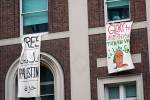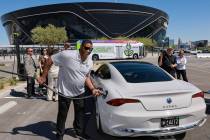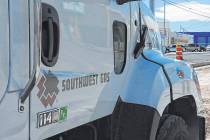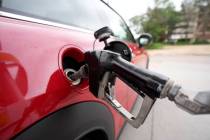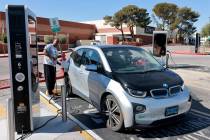The green blues
A lot of things people do in an attempt to “think green” and “leave a smaller carbon footprint” end up backfiring.
As complex ecosystems which man has never been able even to accurately predict are simplified to the level of Miss Nancy of Romper Room advising the children to wash their hands and “Do Be a Do-Bee,” should we be surprised?
Take the story out of Agence France Press over the weekend which reported that two environmental engineers at the University of California at Davis have calculated that it can actually be more “eco-friendly” to drive into town in your SUV than to take the train, depending on seat occupancy rates on the train, as well as the (previously uncounted) carbon dioxide released into the atmosphere in the process of building and maintaining the train and its tracks.
Meantime, a funny thing happened to that whopping $5 billion in economic stimulus “weatherization” funds as they worked their way through Congress last year.
“If you were doing it on a national basis, you’d do the most cost-effective jobs first, which would mean doing a lot in places like the Dakotas and Minnesota,” explains Steven Nadel, executive director of the American Council for an Energy-Efficient Economy, a nonprofit group that favors weatherization.
But that plan didn’t do a good job of attracting the votes of Southern congressmen. So instead, where in the past only 16 percent of such federal funds were spent insulating homes south of the Mason-Dixon line to save on air conditioning costs — a process which nets much smaller overall energy savings — the “Southern” portion has now grown to 31 percent.
This has raised repeated questions about the effectiveness of weatherization in hot-climate states, The New York Times reported last week. The Oak Ridge National Laboratory in Tennessee, which evaluates the program for the Energy Department, released a study last year questioning the program’s results in Texas, which will get $327 million in weatherization money from the stimulus law. The laboratory found that insulating homes did not save a significant amount of money on cooling, a finding it consistent with previous studies.
But J. Bennett Johnston, a former Democratic senator from Louisiana who pushed for the new “31 percent” formula, said more people were dying from extreme heat than extreme cold. “This was not so much an energy saving proposal; it was more of an equity proposal … ” Mr. Johnston said.
So cost-benefit analysis went out the window, because, “We’re from the government, we’re here to help, every congressman had to get his share, and after all … it’s only tax money.”








